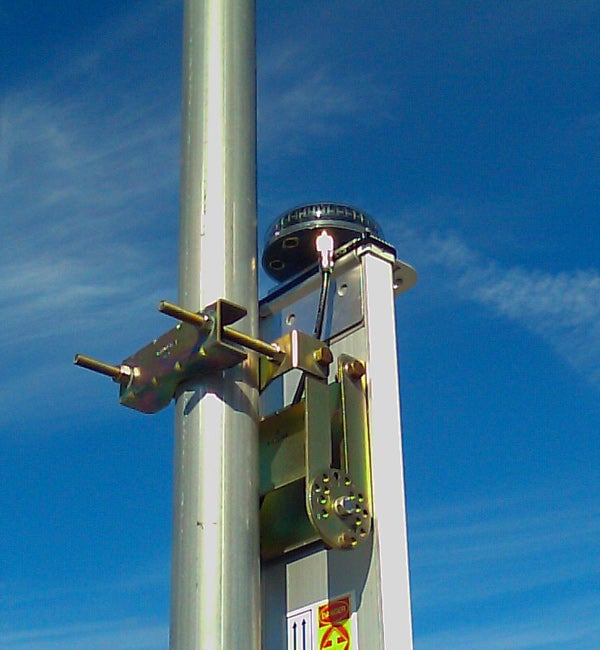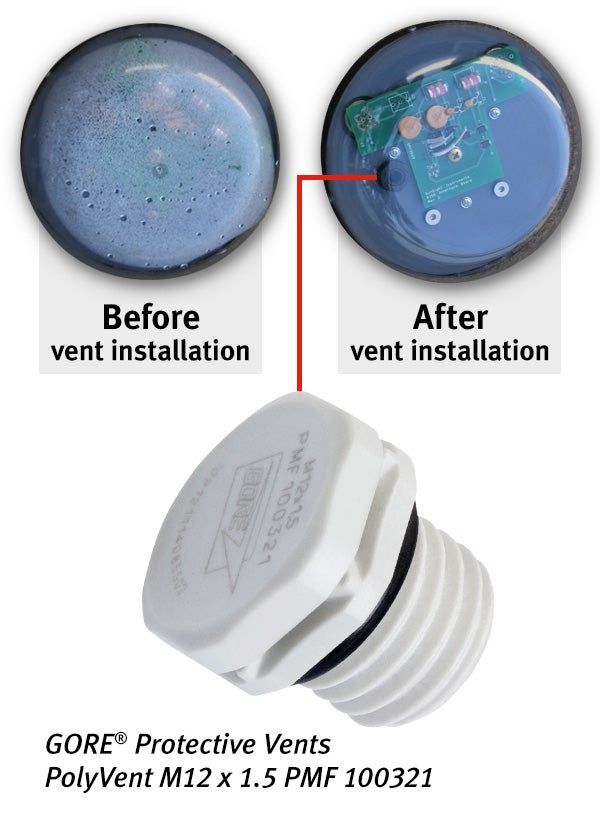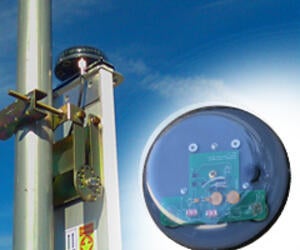GORE® Protective Vents Improve Antenna Alignment Monitoring by Reducing Condensation
Case Studies, United States
Sunsight Instruments of Orlando, Florida, provides antenna alignment and monitoring systems to the telecommunications industry. The AntennAware Attitude Sensor (AAS) is a permanently mounted, fully integrated monitoring sensor that ensures correct alignment of antennae on a continual basis.
Situation

Sunsight Instruments of Orlando, Florida, provides antenna alignment and monitoring systems to the telecommunications industry. The AntennAware Attitude Sensor (AAS) is a permanently mounted, fully integrated monitoring sensor that ensures correct alignment of antennae on a continual basis.
The AAS uses time of day, latitude and longitude information to determine the position of the sun, with highly sensitive accelerometers measuring the down-tilt and antenna plumb. The system evaluates the antenna’s alignment and alerts telecom operators of misalignment conditions, saving thousands of dollars and enhancing the safety of their operations. In addition, operators have accurate alignment information for ensuring efficient market coverage. To calculate the antenna’s position, the AAS relies upon two constant sources of orientation – the force of gravity and the orbit of the earth around the sun. Therefore, it must be able to track the sun’s movement across the sky without any obstruction.
Challenge
Because of constantly changing weather conditions, the Sunsight engineering team knew the AAS system needed a housing that met Ingress Protection 68 standard. At the same time, the housing needed a clear dome that did not block or distort the sun’s rays.
The AAS is exposed to continuous sunlight during the day and cool temperatures at night, so the team knew that the system needed to be able to breathe. Rapid temperature changes outside the housing can cause significant pressure differentials inside the housing, which can result in a vacuum forming. Over time, the vacuum puts stress on the housing seals, which can eventually fail and draw in moisture vapor. Because the moisture vapor has no path out of the housing, it eventually can condense inside the dome, which in turn obstructs sunlight and compromises the AAS measurements. Moisture within the dome can also corrode the sensitive electronic instrumentation that is being protected.

Solution
Based on the recommendation of another antenna manufacturer, Sunsight contacted Gore about installing a GORE® Protective Vent in the AAS system. Gore’s application engineers collaborated with the Sunsight engineering team and conducted several field trials. After five months of exposure to sun, rain and snow, the AAS with the GORE® Protective Vent showed no evidence of condensation, whereas the AAS without a vent showed substantial condensation. During these trials, Gore also evaluated several vent designs and recommended a polyvent for maximum airflow and protection. This vent equalizes pressure in the dome by allowing air and moisture vapor to pass in and out of the enclosure freely, reducing the potential for condensation. At the same time, the vent serves as a barrier to prevent liquid, dirt, dust, salt and other contaminants from entering.
According to Sunsight CEO Tony Wattwood, “Our products are exposed to all weather conditions 24 hours a day, seven days a week – from Anchorage, Alaska to Miami, Florida. With these widely varying environments, the GORE® Protective Vents provide the assurance that our products maintain their IP68 rating during rapid thermal/pressure changes from shipping to installation to operation. Gore’s engineering team understood our situation and worked very closely with us to ensure that our product works reliably regardless of its location.”
FOR INDUSTRIAL USE ONLY
Not for use in food, drug, cosmetic or medical device manufacturing, processing, or packaging operations.
